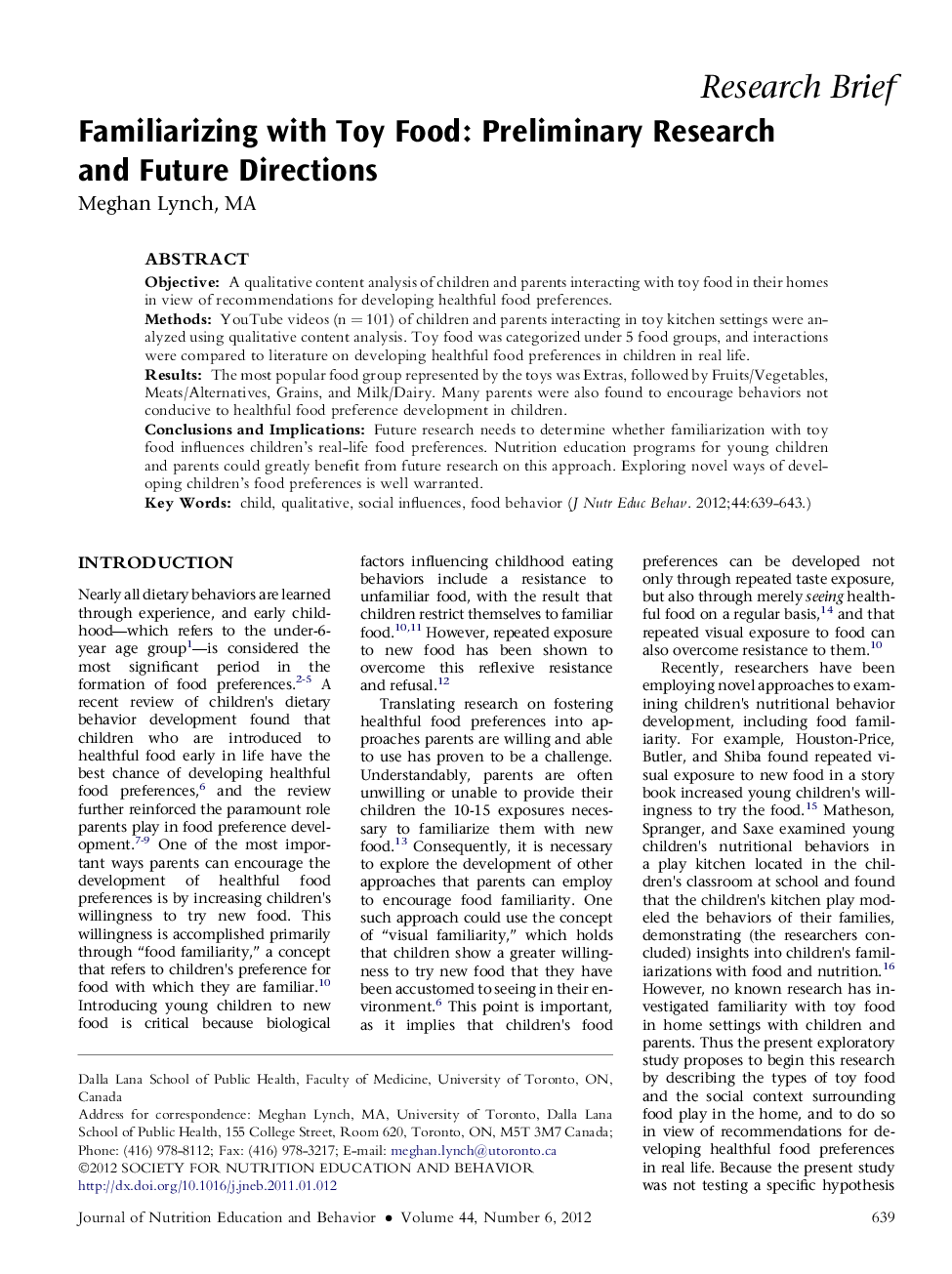| Article ID | Journal | Published Year | Pages | File Type |
|---|---|---|---|---|
| 362197 | Journal of Nutrition Education and Behavior | 2012 | 5 Pages |
ObjectiveA qualitative content analysis of children and parents interacting with toy food in their homes in view of recommendations for developing healthful food preferences.MethodsYouTube videos (n = 101) of children and parents interacting in toy kitchen settings were analyzed using qualitative content analysis. Toy food was categorized under 5 food groups, and interactions were compared to literature on developing healthful food preferences in children in real life.ResultsThe most popular food group represented by the toys was Extras, followed by Fruits/Vegetables, Meats/Alternatives, Grains, and Milk/Dairy. Many parents were also found to encourage behaviors not conducive to healthful food preference development in children.Conclusions and ImplicationsFuture research needs to determine whether familiarization with toy food influences children's real-life food preferences. Nutrition education programs for young children and parents could greatly benefit from future research on this approach. Exploring novel ways of developing children's food preferences is well warranted.
